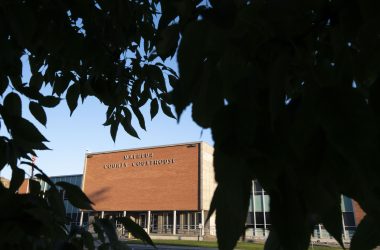By Pat Caldwell
Malheur Enterprise
VALE – Malheur County Sheriff Brian Wolfe is worried a national monument designation for the Owyhee Canyonlands could pose serious challenges to search and rescue efforts because of the possibility access to the area will be limited.
Yet a spokesman for the Bureau of Land Management says a monument designation should not impact normal search and rescue operations.
A coalition of environmental groups, citizens and businesses support a blueprint to designate 2.5 million acres in Malheur County – including the Owyhee Canyonlands – either through Congressional legislation or by presidential action under the Antiquities Act.
The conservation blueprint is a flashpoint issue in Malheur County, where a recent non-binding referendum showed 90 percent of voters oppose the plan.
Wolfe said a monument designation will eventually spark the road closures.
“I believe access will be more limited. If so, obviously it will be harder to get there,” he said.
The Canyonlands terrain – secluded and rough – already creates unique challenges to search and rescue operations, Wolfe said.
A case in point, he said, was a recent search and rescue effort to find two men who damaged their canoe on a trip through the canyon and became marooned. A large number of search and rescue personnel were deployed to the remote, southern end of the county to find the two men. Weather conditions and distance – the site of the rescue was several hours from Jordan Valley – played a key role in how fast the rescue personnel could deploy, Wolfe said.
Eventually the two men were rescued but only after a two-day operation by land and also with a helicopter from the Idaho Army National Guard. Securing the use of the helicopter, which was pivotal to the success of the mission, was not a simple process.
“It took us a day and a half to get the Guard to fly for us,” Wolfe said.
While Wolfe said search and rescue teams can sometimes count on local pilots to help – a Jordan Valley rancher helped find the missing men with the use of his personal airplane – that is not a guaranteed option and it is expensive.
“With aircraft, if you are not able to get the National Guard there is a high cost,” he said.
Meanwhile he’s concerned about the impact of a monument deal on ground search operations.
Wolfe the county search and rescue team – which consists for more than 65 volunteers – average about 15 searches a year for lost individuals, or about one a month.
“Though some months, you go without any or you might have six,” he said.
Larry Moore, a public affairs representative for the Vale District of the BLM, said a national monument designation won’t change things for search and rescue efforts.
“SAR (search and rescue) isn’t affected. Human life trumps any designation. So if human life is at risk, access won’t be an issue,” he said.
Moore said most of the privileges that exist before a monument designation will remain.
“Basically what is allowed in a national monument protects existing rights. Anything you were able to do before, you can probably still do. It is unlikely existing rights would be affected,” he said.
Still Wolfe worries that any kind of restriction could lead to a tragedy.
“Time is of the essence in search and rescue missions,” he said.



